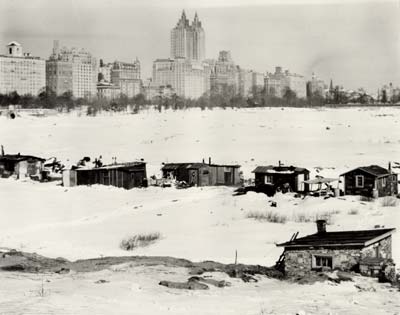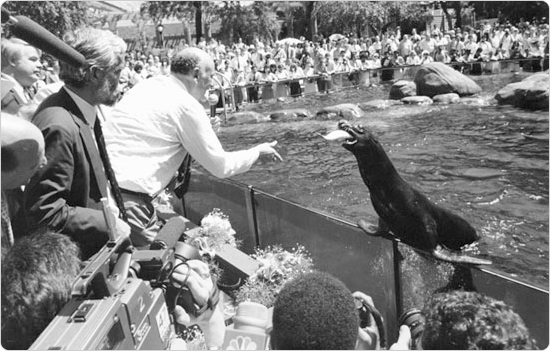After being under the ownership of various men, the landmass now called Roosevelt Island came under the ownership of Robert Blackwell in 1688. Then, it became his namesake—
Blackwell Island. In 1828, the City of New York bought this two-mile-long-island for $32,000. Initially, it served as a center for castaways and necessitated a formal penitentiary, which was established in 1832.
The most influential architect of the time was Alexander Jackson Davis. He designed the Blackwell Island penitentiary, which was constructed of gray granite reflecting feudal-style architecture with its fortress or castle-like appearance. It stood six hundred feet long and four stories high at the north end of the island providing 800 cells for inmates. Just seven years after its grand opening though, the New York City Lunatic Asylum, as it was named, housed 1,700 patients. The 800 cells of the penitentiary were subsequently filled to the brim. Finally in the early 1900s, journalist Nelly Bly exposed the unacceptable conditions of the asylum—inmate
overcrowding, favoritism, and drug dealing—which prompted much needed social reforms.
The plans to clean up the penitentiary and update and revive the island’s castaway-characteristic resulted in its name change from Blackwell’s Island to Welfare Island in 1921. The first step to reform was the transfer of inmates from Blackwell’s to Rikers Island, which, in reality, did not happen until further outrages in the 1930s absolutely necessitated it. The man who administered reform was Mayor Fiorello LaGuardia. Since the age of 17, LaGuardia had an accomplished career in public service beginning with his membership to the US Consulate Service in Europe. Among other achievements, the New York University Law School graduate was elected as mayor in 1933 on a “fusion ticket” against Tammany Hall—a bipartisan electoral agreement to temporarily set aside differences in order to achieve a common goal. To aid in the distribution and transfer of inmates, LaGuardia’s Reform Correction Commission, headed by Austin H. MacCormick, led a raid
on the penitentiary in January 1934 to expose and eradicate those conditions Bly discussed. The result, in fact, was the movement of all inmates to new facilities on Rikers Island, which had just completed construction. The only surviving portion of the former New York City Lunatic Asylum was the hospital wing, which was both influential and progressive at the time—the Metropolitan Hospital.
Throughout the years, various charity and public health institutions had been established on the land as well, which were useful and efficient. Though, toward the end of the 19th century, the island’s institutions became abandoned and the population of the island decreased. After the island became unimaginably desolate, Major John Lindsay in 1968 “appointed a committee for redevelopment of Welfare Island.” The plan was incorporated into Governor Rockefeller’s General Development Plan of the New York State Urban Development Corporation the following year. John Burgee and Philip Johnson completed the new development design. In 1973, a ceremony was held in honor of the island’s soon-to-be renovations and rechristening under the name Roosevelt Island after President Franklin D. Roosevelt. The following years, during the 1970s, residential complexes were built, as well as a memorial park, aerial Tramway, and a subway station.
Today, that same octagonal, gray building located at 888 Main Street on Roosevelt Island,
which once was the New York City Lunatic Asylum, still stands. Developer Becker + Becker Associates transformed the facility in 2006, creating an upscale 500-unit residential community. Roosevelt Island The Octagon is a luxury building providing housing from studios to 3-bedroom penthouses. The original structure has been restored and updated dramatically and it is still a landmark site on Roosevelt Island today. According to a 2000 Census, Roosevelt Island has a population of 9,520 residents. Since then, two additional residential developments have been established. Those buildings provided 1,331 more units of residential space as of summer 2008. It was projected that 1,160 additional units of residential space are to be constructed by 2013. Roosevelt Island residencies are in high demand because of the island’s proximity to mainland Manhattan, its remarkably low crime rate, and its now quaint, tranquil, community-like qualities.
Bibliography
“A Brief History.” www.rioc.com. The Roosevelt Island Operating Corporation of the State of New York, Web. 25 Mar. 2012.
“Elected Mayors of New York City.” www.nyc.gov. Web. 25 Mar. 2012.
“History.” The Octagon. Web. 18 Mar. 2012. <www.octagonnyc.com>.
McCarthy, Thomas. “Before Rikers, Blackwell’s was DOC’s Island Home.” correctionhistory.org. Correction News, Web. 18 Mar. 2012.
“The Octagon Tower.” rihs.us. Roosevelt Island Historical Society, Web. 18 Mar. 2012.
Rodriguez-Nava, Gabriel. “The Rise of a Healthy Community.” Beyond Manhattan. Web. 18 Mar. 2012. <www.nyc24.org>.


























